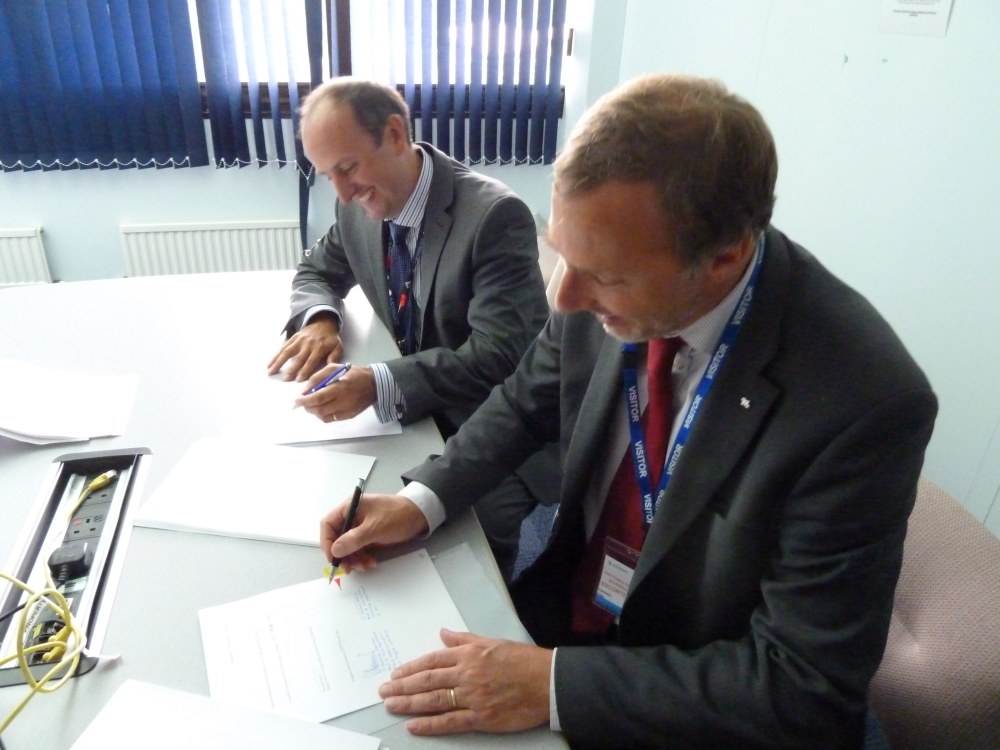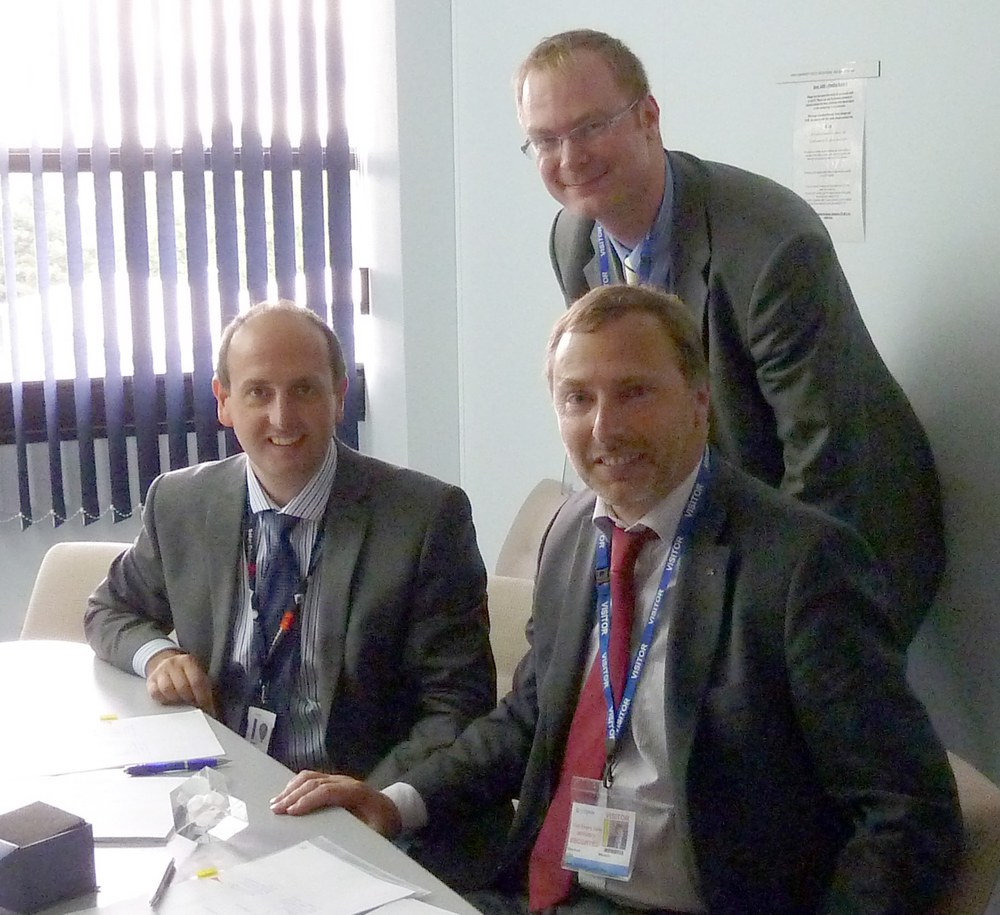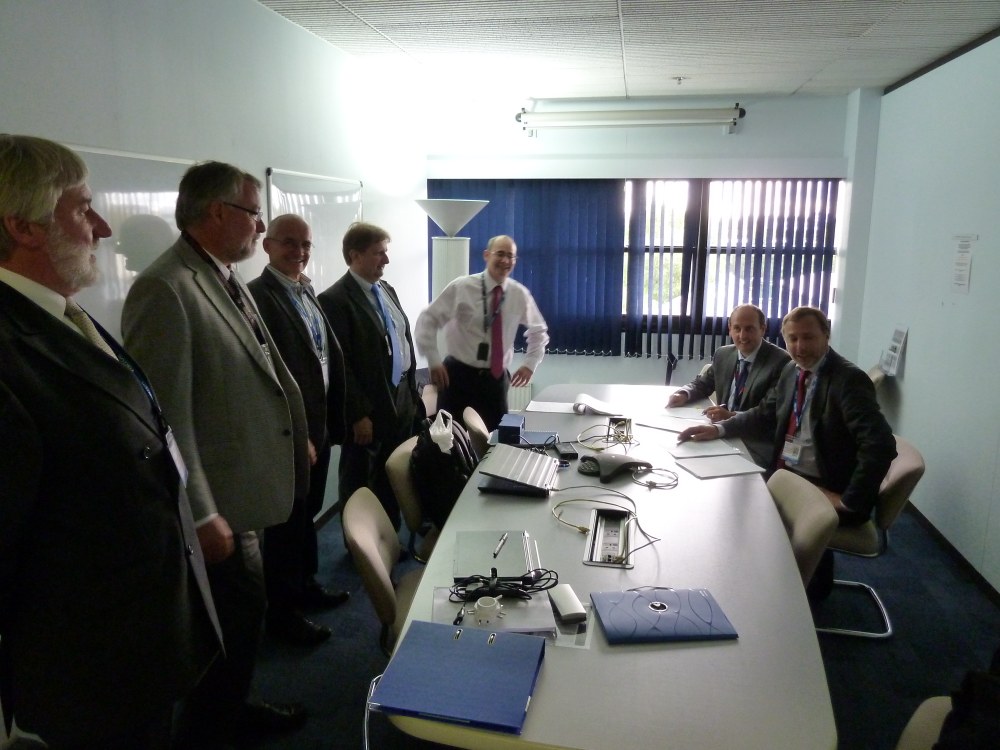Contract for development of the Payload Data Ground Segment for the earth observation satellite Sentinel-5 Precursor was signed

EOC implements the Payload Data Ground Segment (PDGS) for the earth observation satellite Sentinel-5 Precursor. On October 5th a contract between Astrium Ltd. and DLR to develop the PDGS was signed by Mr. Justin Byrne, Deputy Director of Earth Observation and Science Directorate for Astrium Ltd. and Eberhard Mikusch, Head of the Information Technology Department at EOC.
Sentinel-5 Precursor is part of the European GMES program (Global Monitoring for Environment and Security) with the purpose to minimize the data gap between ENVISAT and Sentinel-5. The European Space Agency has the overall responsibility for this atmospheric mission. The sensor was developed in and provided by the Netherlands; Germany’s role encompasses the PDGS. Sentinel-5 Precursor is planned for launch in 2015.
DLR is responsible for the development and operation of the PDGS. In the context of the Sentinel-5 Precursor project, the PDGS handles data reception, processing, archiving, and delivery to end users – the whole chain of payload data handling on ground. The Sentinel-5 Precursor mission is an important bridging mission in the time frame between ENVISAT and Sentinel-5. As a full GMES mission, it will fulfill demanding requirements of continuous product quality assurance, near-real-time capability and dissemination and archiving of level 1 and level 2 data. The sensing instruments TROPOMI UV/VIS-Nadir and TROPOMI-SWIR-Nadir as well as the operational L1 and L2 processors will bring a significant improvement in the precision and resolution of derived atmospheric composition data.
The objective of the project contracted to DLR-EOC is to develop a payload data ground segment for the Sentinel-5 Precursor mission which ensures that payload data is acquired, processed, archived and made available for use around the clock. The DLR Sentinel-5 Precursor PDGS will support mission experts, mission data users and the collaborating ground segments, and preserve long term the Sentinel-5 Precursor data and derived information and knowledge.
DLR has a long tradition in the development and operation of processing and data management functions for remote sensing of the atmosphere. DLR has a strong interest in continuing the ERS/GOME, ENVISAT/SCIAMACHY and MetOp/GOME-2 heritage. Developing atmospheric data processors and engineering payload data ground segments for atmospheric missions are core competences of the DLR institutes involved, IMF and DFD. The extensive knowledge and experience of DLR teams will benefit the Sentinel-5 Precursor mission by reducing development and operations costs and minimizing risks.
The engagement of DLR in various atmospheric applications, including the GMES Monitoring Atmospheric Composition and Climate (MACC) project and the ESA Climate Change Initiative underlines the interest of DLR in a successful Sentinel-5 Precursor mission.


